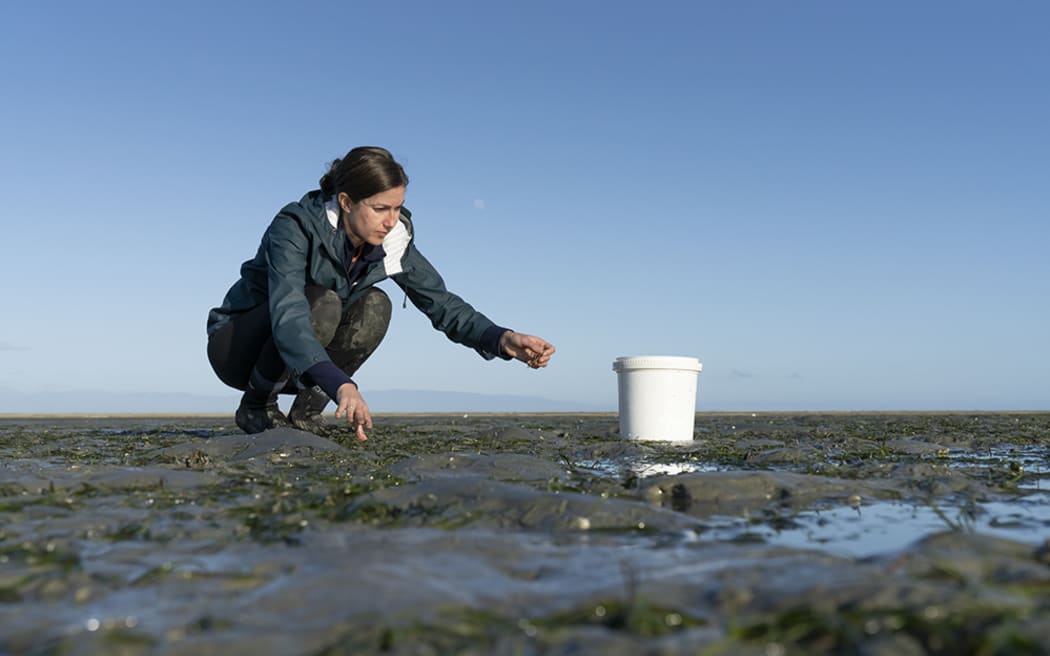Nelson Haven is an eight-kilometre expanse of mudflats northeast of the Nelson township. At low tide, if you happen to don some gumboots and squelch your way out, you’ll find it's also home to an expansive grassy meadow.
The grass is seagrass – the only flowering plant that lives in the sea – and it provides key habitat for many native fish species, as well as performing a vital ecological role in cleaning water, stabilising mud and sequestering carbon.

Cawthron Institute ecologist Dana Clark collecting seagrass flowers from a Nelson estuary at low tide. Photo: Bruce Green / Cawthron Institute
Follow Our Changing World on Apple Podcasts, Spotify, Stitcher, iHeartRADIO, Google Podcasts, RadioPublic or wherever you listen to your podcasts
Marine ecologists from the Cawthron Institute have just completed the first summer of a three-year research project to develop new ways of restoring seagrass meadows – using seeds.
Until recently, it was thought that seagrass in New Zealand, which belongs to the species Zostera muelleri, only rarely flowered and set seed.
But the marine restoration team at the Cawthron Institute have discovered there are actually plenty of greenish flowers in the grass, although team leader Dana Clark admits they're hard to find.

Seagrass, seen here exposed at low tide, is the only marine flowering plant. Photo: Alison Ballance
The Haven is one of three seagrass research sites near Nelson, along with Waimea and Delaware / Wakapuaka estuaries for the project Restoring Aotearoa New Zealand’s Seagrass Meadows.
Over the past summer, the Cawthron Institute team have been surveying their field sites and monitoring flowering.
They've discovered that flowering begins in October and ends in February, with peak flowering in December.
So far, the researchers have collected about 3,000 seagrass flowers, Dana says, which were taken back to the lab and kept alive to mature and set seed.

Seagrass flower. Photo: Bruce Green / Cawthron Institute
Listen to the full episode to learn more about collecting seagrass flowers in the field, and how the researchers used a ‘seagrass spa’ to get the flowers to successfully set seed – the first time this has been done in New Zealand.


